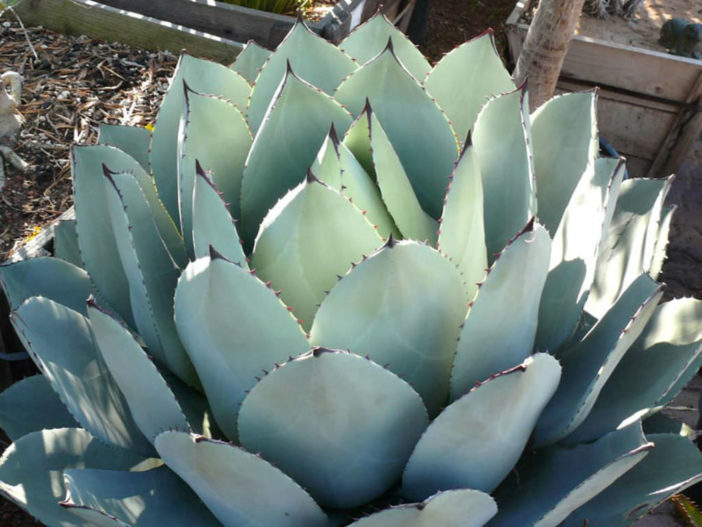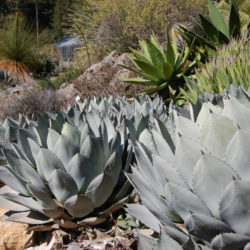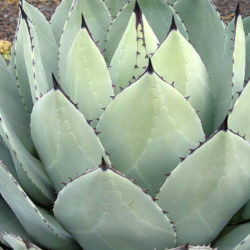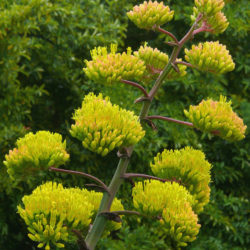Scientific Name
Agave parryi var. huachucensis (Baker) Little
Common Name(s)
Artichoke Agave, Huachuca Agave, Parry's Agave, Parry's Huachuca Agave
Synonym(s)
Agave applanata var. huachucensis, Agave huachucensis
Scientific Classification
Family: Asparagaceae
Subfamily: Agavoideae
Genus: Agave
Origin
The native range of this variety is mainly in the Huachuca Mountains in Arizona. Smaller populations are found in the Dragoon Mountains and south of the border in Sonora, Mexico. It grows at elevations between 5.100 and 8,200 feet (1,550 m and 2,500 m) on open slopes and in mixed oak and pine forest.
Description
Agave parryi var. huachucensis is a succulent that forms compact, freely-suckering rosettes of broad, rigid, glaucous leaves with sharp teeth along the margins and a conspicuous dark terminal spine. The rosettes grow up to 2.5 feet (75 cm) tall and 3 feet (90 cm) in diameter.
When mature (over ten years), the rosettes send up a branched flower spike to 20 feet (6 m), bearing clusters of yellow to yellowish-green flowers tinged with pink. The flowering usually occurs in late spring or early summer. Rosettes die after flowering.
This variety is more robust than Agave parryi subsp. parryi. It has larger leaves and also larger flowers.
Etymology
The varietal epithet "huachucensis (wa-koo-KEN-sis)" refers to the Huachuca Mountains, where this variety is mainly distributed.

Hardiness
USDA hardiness zone 8a to 11b: from 10 °F (−12.2 °C) to 50 °F (+10 °C).
How to Grow and Care
Agave is not a difficult plant to grow. They're slow-growing and dramatic and will even thrive on a bit of neglect. If you're the type of person who likes to fuss with houseplants and water a lot, Agave is probably not the plant for you. If, however, you're the type of person who likes to set it and forget it, and you have a sunny window, Agave might be the way to go. Be aware that some large varieties will eventually outgrow your room (unless you have a large greenhouse), and Agave can be aggressive. They have irritating sap and sometimes very sharp thorns that can cause injuries to small children and even pets.
In general, Agaves do not need to be repotted every year. Most species commonly found in cultivation grow slowly and take a long to outgrow their pot. It's also best to handle your Agave as little as possible since they do not like to be disturbed.
See more at How to Grow and Care for Agave.
Links
- Back to genus Agave
- Succupedia: Browse succulents by Scientific Name, Common Name, Genus, Family, USDA Hardiness Zone, Origin, or cacti by Genus
Photo Gallery
Click on a photo to see a larger version.


